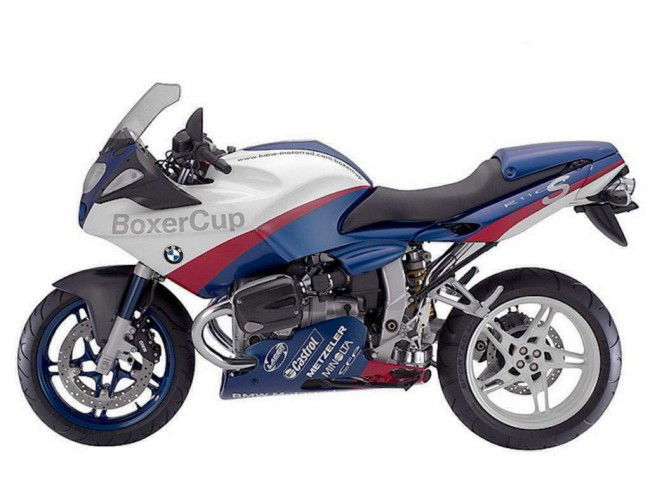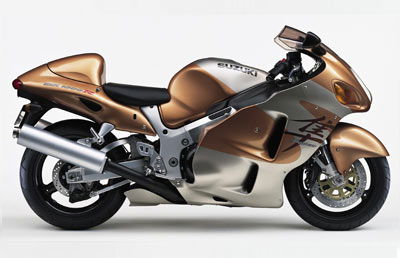Daytona 650 (2004 - 2005) review
The extra 47cc transforms the Daytona from a good, but underpowered road bike to an excellent road bike that will flatter any rider on a race track. Triumph, finally, has put the finishing touch on it.

Taking a leaf out of Kawasaki’s middleweight sportsbike book with its 2002 636cc ZX-6R, Triumph has increased the Daytona’s capacity from 600cc to 650cc for 2005. The new model is basically a Daytona 600 with a 3.1mm longer stroke engine taking the capacity out 47cc to 646cc.
Group testing the latest 600s the Triumph has always been there or thereabouts on track and easily the best day-to-day road bike, although it lacked power. Well, not any more…
After just a few miles on the Daytona 650, I couldn’t believe the difference the extra capacity has made to the mid-range. Having owned a Daytona 600 for over 15,000 miles last year I know the bike pretty well and suppose (I should confess) have a slight soft spot for them, but the complete lack of any power below 7000rpm was quite annoying. Not so with the new 650.
Just accelerating in first gear is enough to lift the front wheel in the air. Not violently but a gentle rise as the revs increase, and without any provocation such as snapping the throttle open. From about 5000rpm the new motor drives smoothly with a gentle increase of power; no jumps or kicks, just a gradual build up. It’s very impressive and both Niall and myself were surprised at the difference 47cc has made to the sheer usability of a motor.
Niall rightly reckoned; “It took a while to get used to riding a Daytona that didn’t require a couple of downshifts for an overtake – and also one that had a gearchange that worked well....” It was a major bugbear of the old Daytona that every now and then it would find a false neutral when down changing. To be fair this usually happened on track rather than the road but the gearbox was a weak spot which needed sorting.
Being a Triumph, the gear change is never that smooth, but the 650 is far more positive changing then the old model. Despite both Niall and myself doing our combined best to get it to jump out of gear it didn’t during downshifts on both the road and track, although it wasn’t always so good going up the box.
I’m fairly sure that this was just down to it being a new bike with a slightly stiff mechanism, but every now and then it would miss engaging a gear going up. Nothing to really worry about and more miles would help.
The rest of the bike is identical to the old Daytona, which is still one of my favourite bikes around. The chassis is almost as good as the very best of the Japanese and to be truthful it’s only on a track and only when you are really hard on it that the differences show. I’ve watched Niall lap Donington at a terrifying rate on a Daytona and he reckons “the chassis is right up there, if slightly softly sprung for hardcore on-the-edge track lunacy.”
But it’s this slight softness that makes the Daytona 650 such a good road bike. If the urge takes you it can be taken touring, will deliver 120 miles between fill-ups and once you change the standard screen for one with more height (the standard one is far too low) you can easily sit on the motorway all day long. Try that on a CBR600RR or ZX-6R and you’ll need new wrists fairly sharpish...
Unlike some of the Japanese bikes it’s not intimidating to ride as the power is delivered in such a smooth, easy to use fashion. It doesn’t have a Suzuki-sweet gearbox but it’s much improved over the Daytona 600’s and is perfectly acceptable.
Then we come to the price. The new 650 is only £150 more than the current Daytona at £6499 (that’s a cheap factory fitted hop-up kit) and it should occupy the same insurance category. And when most of the other sports 600s are topping £7000, the Daytona looks an even more tempting prospect, especially if most of your riding is done on the road rather than the track.
Taking a leaf out of Kawasaki’s middleweight sportsbike book with its 2002 636cc ZX-6R, Triumph has increased the Daytona’s capacity from 600cc to 650cc for 2005. The new model is basically a Daytona 600 with a 3.1mm longer stroke engine taking the capacity out 47cc to 646cc.
Group testing the latest 600s the Triumph has always been there or thereabouts on track and easily the best day-to-day road bike, although it lacked power. Well, not any more…
After just a few miles on the Daytona 650, I couldn’t believe the difference the extra capacity has made to the mid-range. Having owned a Daytona 600 for over 15,000 miles last year I know the bike pretty well and suppose (I should confess) have a slight soft spot for them, but the complete lack of any power below 7000rpm was quite annoying. Not so with the new 650.
Just accelerating in first gear is enough to lift the front wheel in the air. Not violently but a gentle rise as the revs increase, and without any provocation such as snapping the throttle open. From about 5000rpm the new motor drives smoothly with a gentle increase of power; no jumps or kicks, just a gradual build up. It’s very impressive and both Niall and myself were surprised at the difference 47cc has made to the sheer usability of a motor.
Niall rightly reckoned; “It took a while to get used to riding a Daytona that didn’t require a couple of downshifts for an overtake – and also one that had a gearchange that worked well....” It was a major bugbear of the old Daytona that every now and then it would find a false neutral when down changing. To be fair this usually happened on track rather than the road but the gearbox was a weak spot which needed sorting.
Being a Triumph, the gear change is never that smooth, but the 650 is far more positive changing then the old model. Despite both Niall and myself doing our combined best to get it to jump out of gear it didn’t during downshifts on both the road and track, although it wasn’t always so good going up the box.
I’m fairly sure that this was just down to it being a new bike with a slightly stiff mechanism, but every now and then it would miss engaging a gear going up. Nothing to really worry about and more miles would help.
The rest of the bike is identical to the old Daytona, which is still one of my favourite bikes around. The chassis is almost as good as the very best of the Japanese and to be truthful it’s only on a track and only when you are really hard on it that the differences show. I’ve watched Niall lap Donington at a terrifying rate on a Daytona and he reckons “the chassis is right up there, if slightly softly sprung for hardcore on-the-edge track lunacy.”
But it’s this slight softness that makes the Daytona 650 such a good road bike. If the urge takes you it can be taken touring, will deliver 120 miles between fill-ups and once you change the standard screen for one with more height (the standard one is far too low) you can easily sit on the motorway all day long. Try that on a CBR600RR or ZX-6R and you’ll need new wrists fairly sharpish...
Unlike some of the Japanese bikes it’s not intimidating to ride as the power is delivered in such a smooth, easy to use fashion. It doesn’t have a Suzuki-sweet gearbox but it’s much improved over the Daytona 600’s and is perfectly acceptable.
Then we come to the price. The new 650 is only £150 more than the current Daytona at £6499 (that’s a cheap factory fitted hop-up kit) and it should occupy the same insurance category. And when most of the other sports 600s are topping £7000, the Daytona looks an even more tempting prospect, especially if most of your riding is done on the road rather than the track.
Dryweight (kg)165
Seats-1
Seat Height (mm)815
Suspension Front-43mm cartridge forks
Suspension Rear-Monoshock
Adjustability Front-Preload, compression and rebound
Adjustability Rear-Preload, compression and rebound
Tyres-Pirelli Diablo Tyres Front-120/70 x 17in Tyres Rear-180/55 x 17in
Brakes Front-2 x four-piston calipers, 308mm discs
Brakes Rear-Single-piston caliper, 220mm disc
Tank Capacity (litres)18
Wheelbase (mm)1390
Rake (degrees)24.6
Trail (mm)89
Chassis-Aluminium beam perimeter
ColoursYellow/Red
Cubic Capacity (cc)646
Max Power (bhp)103
Max Power Peak (rpm)12000
Torque (ft/lb)46
Torque Peak (rpm)10000
Bore (mm) 68 Stroke (mm)44.5
Valve Gear-DOHC
Compression Ratio-12.8
Cooling-Liquid-cooled
Fuel Delivery-Keihin fuel-injection
Stroke Type-Four Stroke

